Are Basements Safe During Tornadoes? Signs, Tips & FAQ
-

- Last updated:
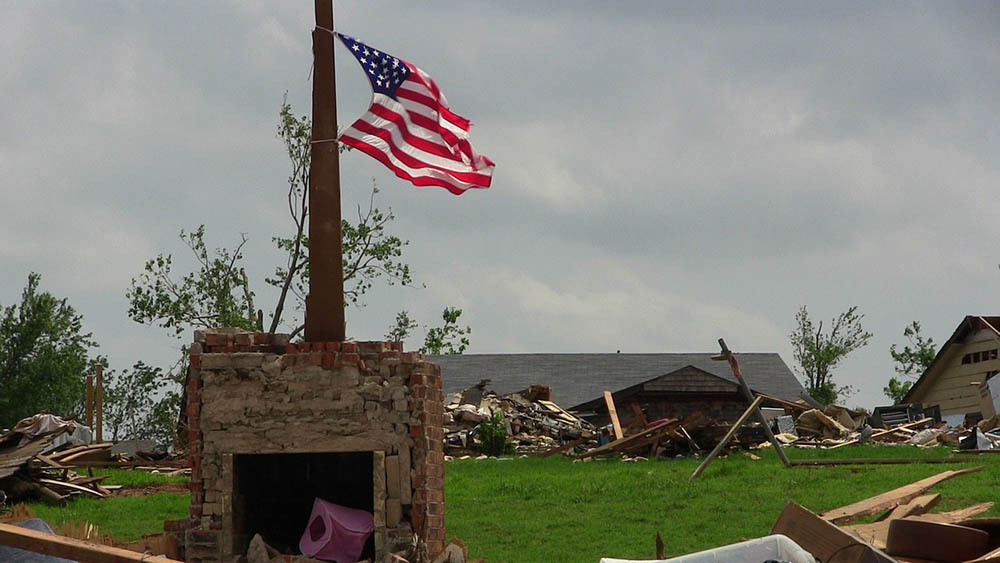
For many decades, basements have been an integral part of many American homes. They are spacious and cozy, and you can both relax and get some work done there. But will you be safe down there during a natural disaster? Can it protect you from a tornado? Yes, as long as the basement is made of concrete and properly sealed, it will be the safest place to hide in during a tornado. You can always make it safer, of course.
There are some simple yet effective rules to follow to weather the storm. In this guide, we’ll talk about how to get the basement ready, how to predict an upcoming tornado, the difference between tornadoes and hurricanes, and the most at-risk states. Alright, let’s get right to it!
What Is the Purpose of a Basement?
Originally, basements were invented for storing goods. They used to be much smaller, colder, and more humid. However, during the Industrial Revolution¹ in the US, basements became warm, well-lighted, and tightly sealed. Most house plans put the furnace, water tank, pipes, and cables down there to free up room in the rest of the house. Speaking of rooms, you can also use the basement as a gym, office, or playground.
Plus, when it’s too hot outside, the basement will keep you nice and warm (but also humid if it’s not weatherproofed). Last, but not least, since these structures serve as the foundation and are usually 8 feet deep into the ground, they can protect you from most natural hazards. Does that mean you should hide there during a tornado? Let’s talk about that next.
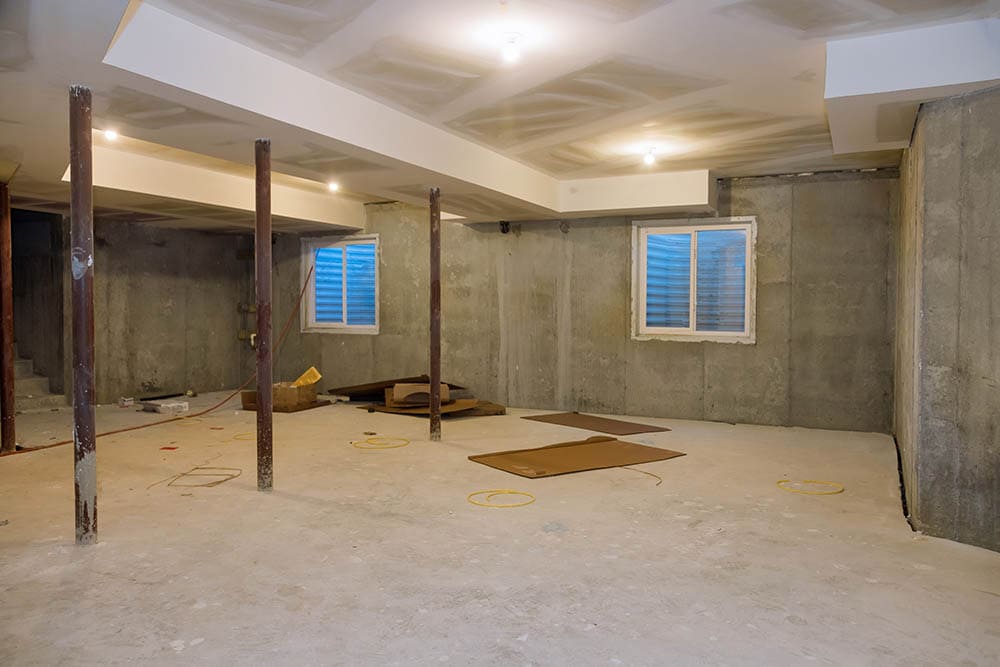
Is It Effective Against a Tornado?
Basements are the safest place in a single-family house to take shelter during a tornado. Essentially, a basement is an underground fortress that’s practically impossible for a tornado to “crack”. You could also try to hide underneath a workbench, bed, or table. But, in most cases, that won’t be necessary. Just wait it out and let the tornado pass.
And remember: no other room in the house will be able to protect you as much as a basement or a cellar will. Even if the whole house is built from concrete, the basement will keep you safe from debris, which can’t be said about the kitchen, living room, or any of the bedrooms. Slabs don’t offer any protection (as they’re just a thick layer of concrete), while crawl spaces are even less secure than the top floor.
What Can You Do to Stay Safe?
If you’re living in a brand-new house and the basement was built from block walls, poured-in-place concrete, or, let’s say, bricks or stone, that should be enough to safeguard you and your family from the mightiest storms. Weatherproofing also plays a big role here. While sealants are mostly used against floods, insects, and rodents, we’d still recommend getting a decent-quality sealant for, well, sealing the walls and the floor.
Now, if the news is reporting a severe tornado, and they’re telling you exactly which direction it will come from, gather around in the opposite corner. If there’s no info on that, the center will be your best bet¹. The farther away you are from the windows (if there are any in the basement), the better. The same is true for water tanks, laundry machines, and furnaces.
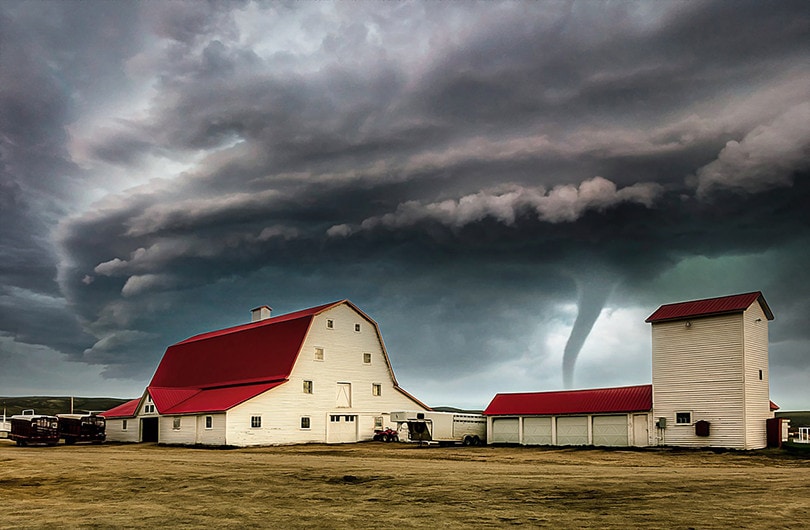
Getting Ready to Face a Tornado
Sealing the basement and finding the safest spot to be in are the two most important things to do during a storm. But, you should also check weather reports and turn the electricity off, not to mention put food, water, medicine, and other stuff there to make this experience as smooth and easy as possible:
- Listen to Local Weather Forecasts. Tune in to weather news and keep your eyes and ears open. You can listen to the Weather Channel, go to Weather.com, or check out what they’re saying on local news. Tornadoes can be scary when you don’t know how big they are. Fortunately, in most US states, they’re pretty small and short-lived: that should give you peace of mind.
- Get Fully Stacked. We’re talking about snacks, warm clothes, and a charged phone or tablet. Again, most tornadoes only last for 20–30 minutes¹. However, it’s not rare for a tornado family¹ to attack a certain area, and when that happens, you’ll be stuck in the basement for a lot longer. Besides, it will take some time for emergency workers to reach you.
- Make Sure You Have Everything. Ideally, pack food and water for at least 3–4 days. If there are toddlers and pets in the house, don’t forget to pack baby formula and some dog/cat food as well. A flashlight with batteries, a first aid kit, and a garbage bag will also come in handy. Oh, and this should be done in advance, way before the first dark clouds appear in the sky.
- Turn Electricity and Gas Off. This is a safety precaution. No matter how accurate the forecast is, you still won’t know exactly how big of a “hit” your house will take from the tornado. So, to avoid short circuit failures, shut the main breaker down. That way, you’ll also eliminate the chance of electric spikes igniting any potential gas leaks.
Which States Are Most at Risk of Tornadoes?
Mississippi, Texas, and Alabama are historically prone to tornadoes¹. The same is true for the other two coastal states¹ — Louisiana and Florida. In fact, every single state in the Great Plains is at high risk of storms and hurricanes. That’s why this area is called Tornado Alley. We’re talking about Iowa, Illinois, Tennessee, Kentucky, Missouri, and Nebraska.
Last year, there were 118 tornadoes registered in Texas alone (100 in Alabama; 50 in Missouri). Unfortunately, tornadoes are hard to monitor and they can form quickly in just any part of the country. Still, if you want to be as safe and far away from this hazard as possible, buy/build a home in Alaska, Oregon, Idaho, New Hampshire, Hawaii, or Maine. There wasn’t a single tornado reported in any of these states in 2021.
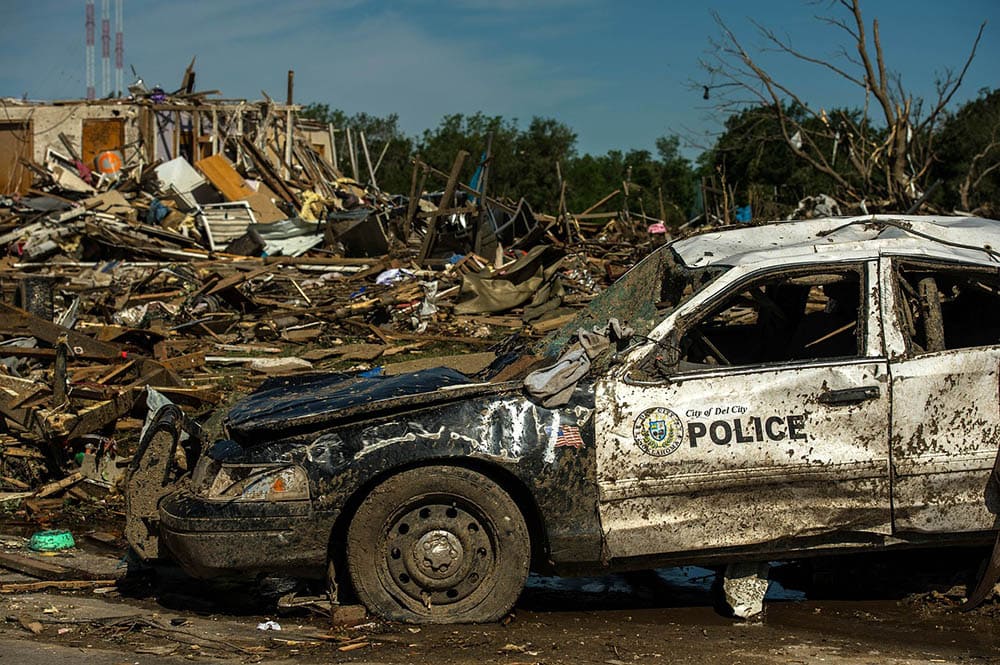
Tornado vs Hurricane: What’s the Difference?
In many ways, these natural hazards are very similar. At the heart of both hurricanes and tornadoes are swirling, devastating winds¹ that are caused by atmospheric instability. Still, tornadoes and hurricanes develop under different circumstances, even though it is possible to witness them at the same time. So, can a tornado emerge from a hurricane? Yes, it can, yet it doesn’t work the other way around.
Tornadoes are much smaller, less harmful, and have a shorter “lifespan”. With an average speed of 100–300 mph, they usually cover 10–20 miles and deal significantly less damage compared to full-fledged hurricanes. Next, they spawn from thunderstorms while hurricanes always appear over ocean waters. One last thing: storms rotate clockwise in the southern hemisphere and do the exact opposite in the northern hemisphere.
A Storm Is Coming: Learning to Recognize the Signs
While weather predictions are accurate most of the time, they do tend to “miss” a tornado or two once in a while.
- Unusually strong rotation in the clouds
- Spinning dust/debris on the ground right below a cloud base
- Intense wind preceded by heavy rain
- Short bursts of heavy rain (or, it can be hail instead)
- Loud rumbling; if the roaring is ongoing, that’s a sign of a tornado
- Low-sitting clouds in the sky with regular lightning and flashes
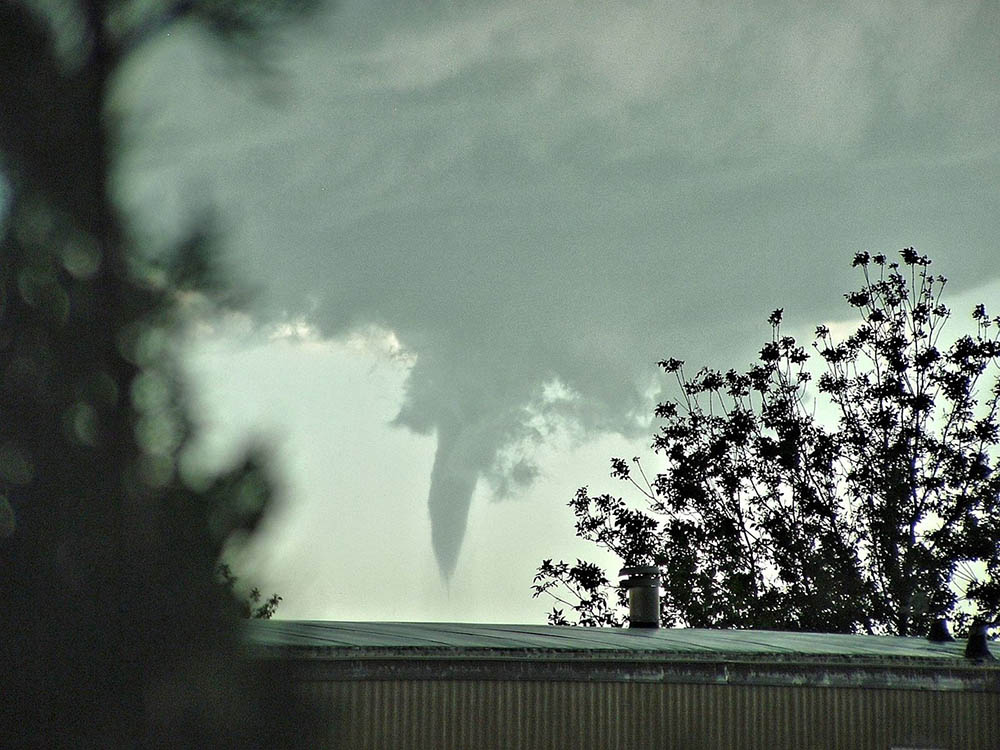
Are Basements Resistant to Earthquakes?
In contrast to popular belief, it’s not the ground’s movements that you should be worried about during an earthquake. Instead, watch out for falling debris¹, as it’s responsible for most injuries. That’s why basements are relatively safe during this natural hazard, especially if the walls are built from concrete. On the other hand, if the earthquake is very strong and the basement’s ceiling is made of wood, that could be a problem.
The reason: the debris from the main and the second floors/stories might crash into the ceiling and hurt you while you’re in the basement. Also, if you’re caught off guard by an earthquake while you are upstairs, do NOT rush down into the basement, as the debris and all the shaking will make that a dangerous trip.
Conclusion
Do you live in an area that’s prone to tornadoes? Then a basement will be the best “remedy” against this hazard. Today we learned that slabs and crawl spaces won’t be able to safeguard against a tornado, but a basement will. As long as it’s built to standards and doesn’t have any cracks or leaks, you will be safe down there.
Use this guide as a manual for recognizing tornado signs, sealing the walls, and getting everything ready for an emergency. The more you know and the sooner you prepare for a potential disaster, the easier it will be to survive it. Stay put, listen to the radio, and even the most severe tornadoes will pass!
- Wikipedia – Gulf Coast of the United States
- The 10 worst and best states for tornadoes
- UCAR – Where Tornadoes Happen
- Industrial Revolution in the United States
- Is Your Basement Tornado-Ready?
- Should You Go Into the Basement in an Earthquake?
- What is the difference between a tornado and a hurricane?
- During a Tornado, Is a Basement a Life Saver or a Death Trap?
- Gov – Tornadoes – Nature’s Most Violent Storms
- StormPredictionCenter – Tornado Safety
- Wikipedia – Tornado family
Featured Image Credit: RevDP, Pixabay
Contents


